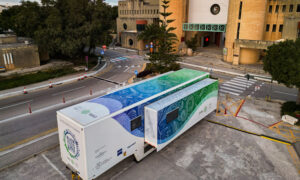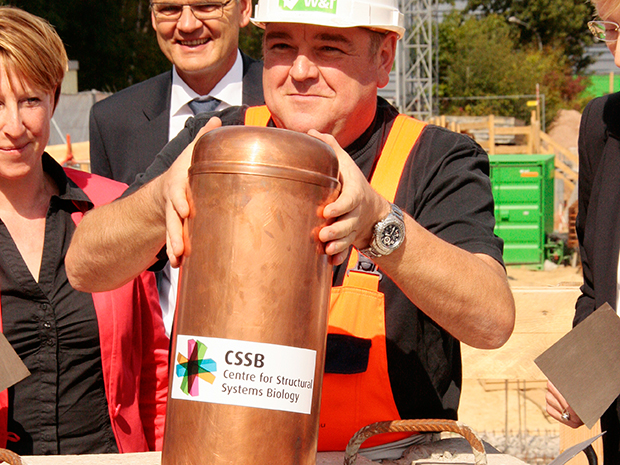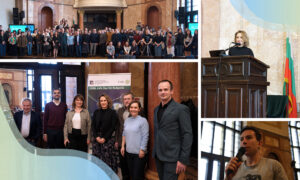
CSSB foundation stone ceremony
On 29 August, Hamburg’s science senator Dorothee Stapelfeldt, secretary of state in Lower Saxony’s science ministry Andrea Hoops, and founding director of the Centre for Structural Systems Biology (CSSB) Matthias Wilmanns, together with representatives of the CSSB partners, laid the foundation stone for the new Centre's research building.

The CSSB was officially launched at the beginning of 2014 and already more than half of the planned eleven appointments have been filled with top international researchers, several of whom who have already starting establishing their research groups on the Deutsches Elektronen-Synchrotron (DESY) campus. Now the joint research building that will house the scientists and their laboratories is also taking shape.
The CSSB brings together interdisciplinary groups from nine partners from across northern Germany who together will investigate how pathogenic organisms attack and infect their hosts. The CSSB building is located next door to DESY’s state-of-the-art X-ray sources, providing the CSSB research groups with efficient and direct access to world leading structural biology infrastructures for their work. This will offer “an excellent environment to carry out interdisciplinary research with novel methods” said CSSB founding director and head of EMBL Hamburg Matthias Wilmanns.
An excellent environment to carry out interdisciplinary research with novel methods.
All speakers at the ceremony underlined the Centre’s innovative and ground-breaking philosophy. “The new interdisciplinary research centre brings together existing strengths, makes them visible and opens up new possibilities across state borders to do research in this important field,” said Andrea Hoops. CSSB group leader Martin Hällberg, jointly associated with the Karolinska Institute in Sweden and visiting faculty at EMBL Hamburg, thanked the CSSB consortium for the opportunity to be a part of the project: “The CSSB is the opportunity of a lifetime, enabling us to do what we could not do alone, and by doing so forging new frontiers.” Thomas Marlovits, CSSB deputy director and group leader from the University Hospital Eppendorf was also keen to emphasise the Centre’s uniqueness and potential: “Here we can do things that are not possible elsewhere,” he stressed.

Hamburg’s science senator Dorothee Stapelfeldt has followed the CSSB closely from the very beginning and was pleased and proud to see how the project has developed. “The CSSB is an additional building block in our plan to further establish Hamburg and the research campus Bahrenfeld as a leading international location for structural research,” she said. “It is an important signal that the north German states are working closely together, actively supported by the federal government. My thanks go to all partners of this project.”
Before the foundation stone was laid, the partner representatives added mementos to a time capsule that was placed into the stone. EMBL director general Iain Mattaj added a copy of the magazine commemorating 40 years of EMBL, published for the anniversary celebrations held earlier this year.

The new three-storey joint research building – designed by architects Hammes and Krause – will house 11000 square metres of laboratories and offices for 180 scientists. Around 2800 square metres of lab space will be equipped with state-of-the-art instruments, including the most advanced cryo-electron microscopes. Up to one fifth of the CSSB will be reserved for junior groups and guest researchers. The building is scheduled to open in about two years’ time. The circa 50 million Euro investment is divided between 38 million Euro for the building and 12 Million Euro for scientific equipment. The federal government carries 73% of these costs, Hamburg 17% and Lower Saxony 10%.


